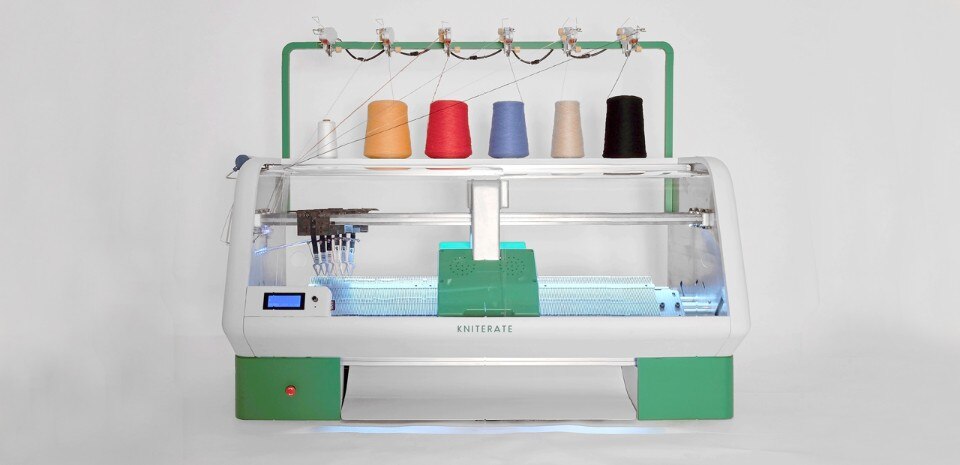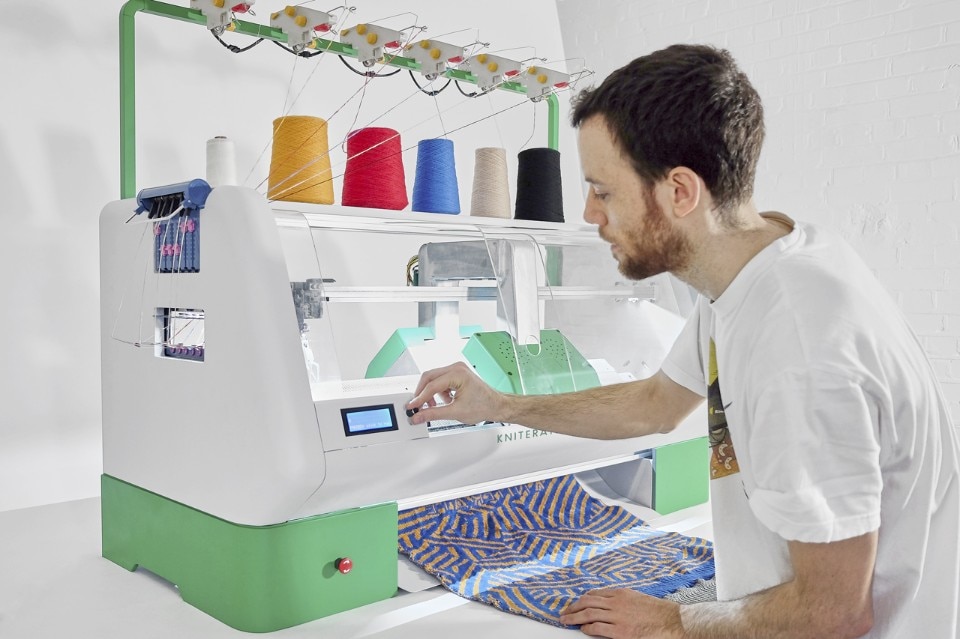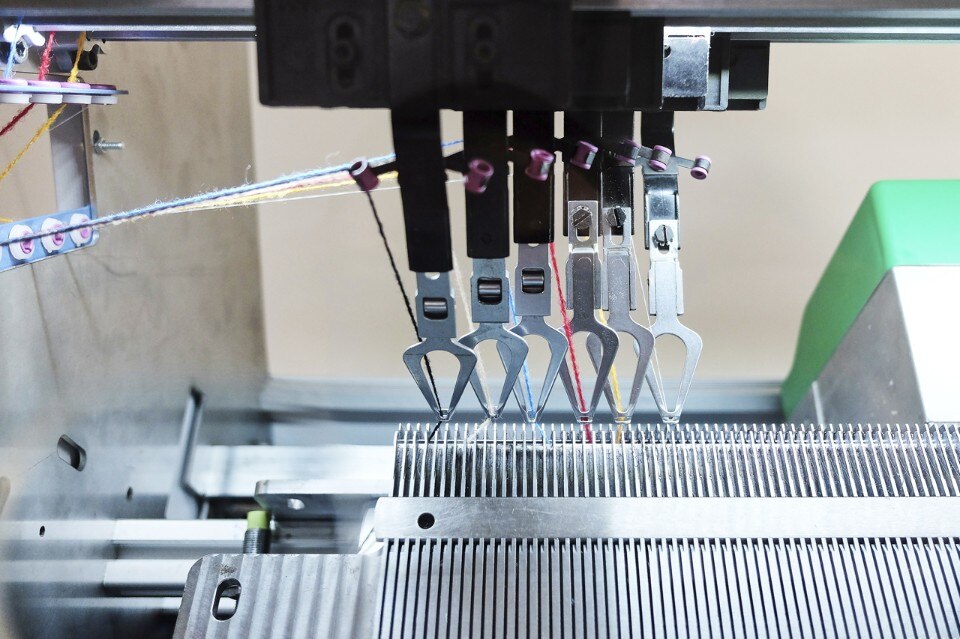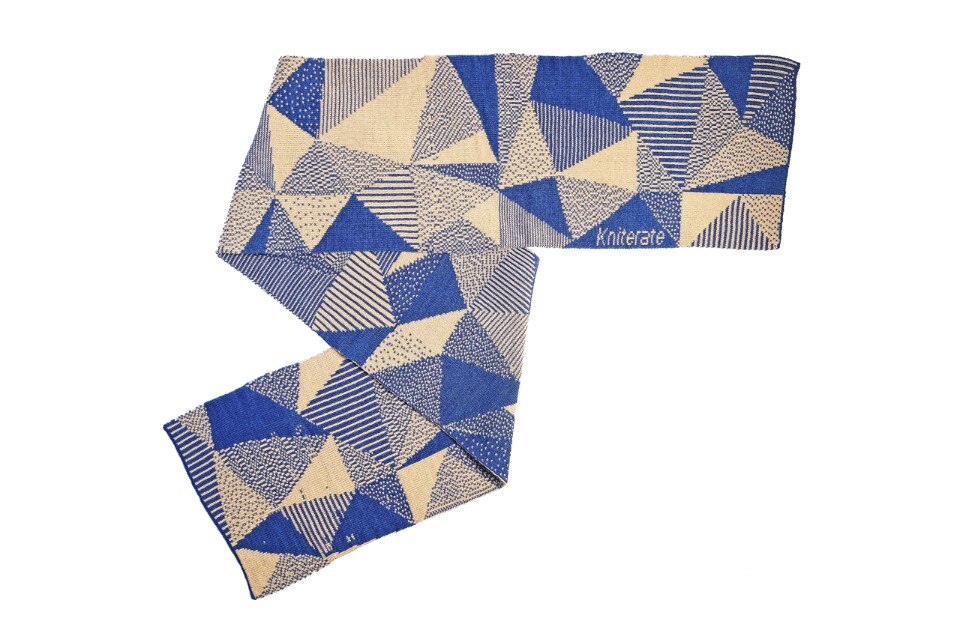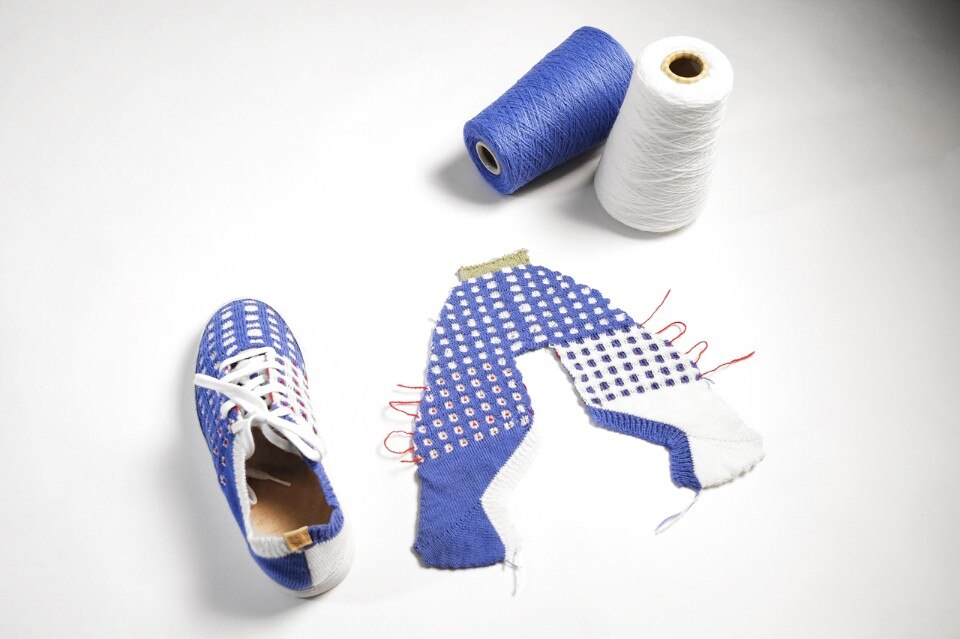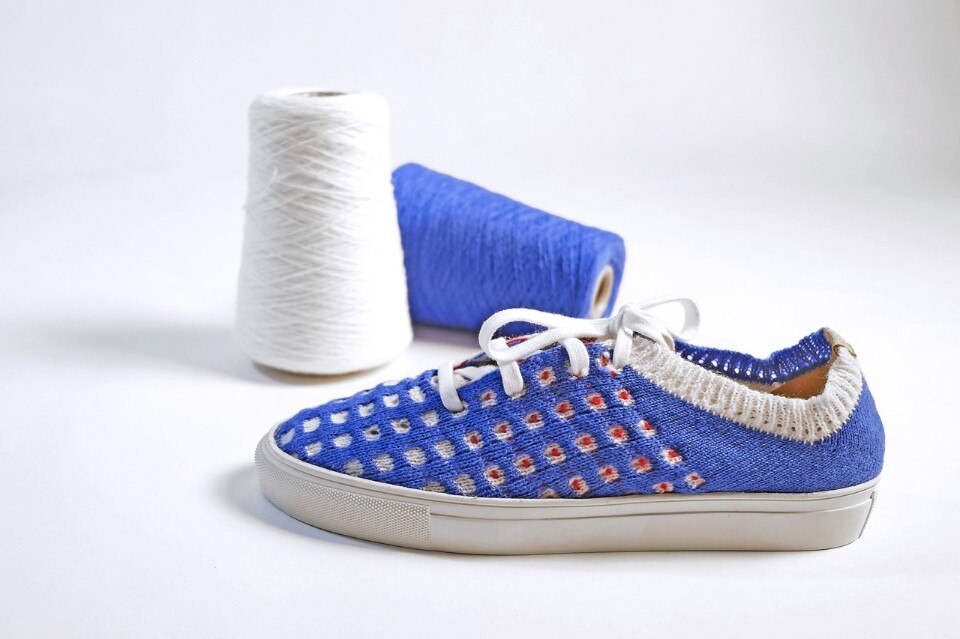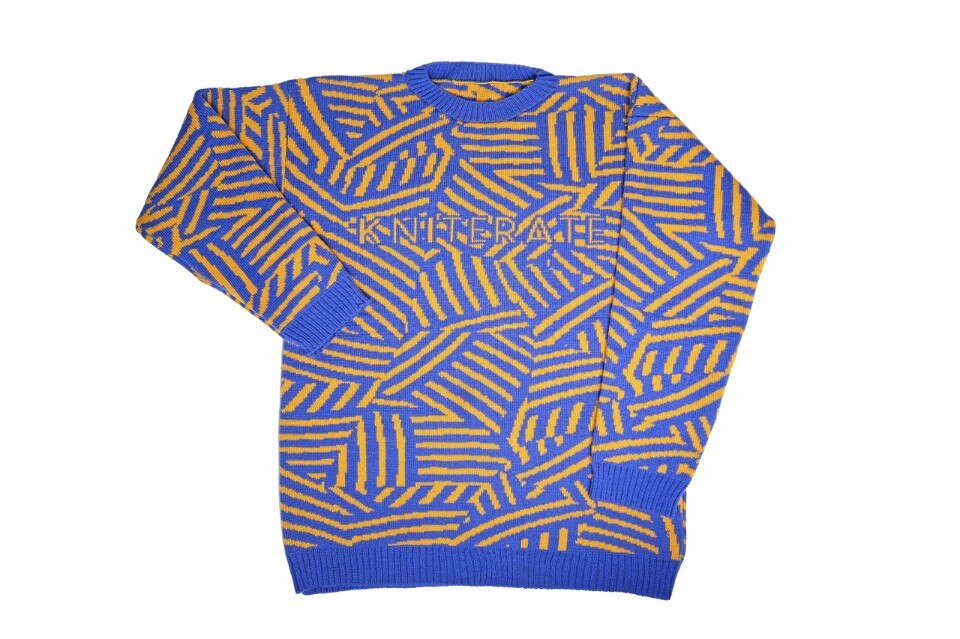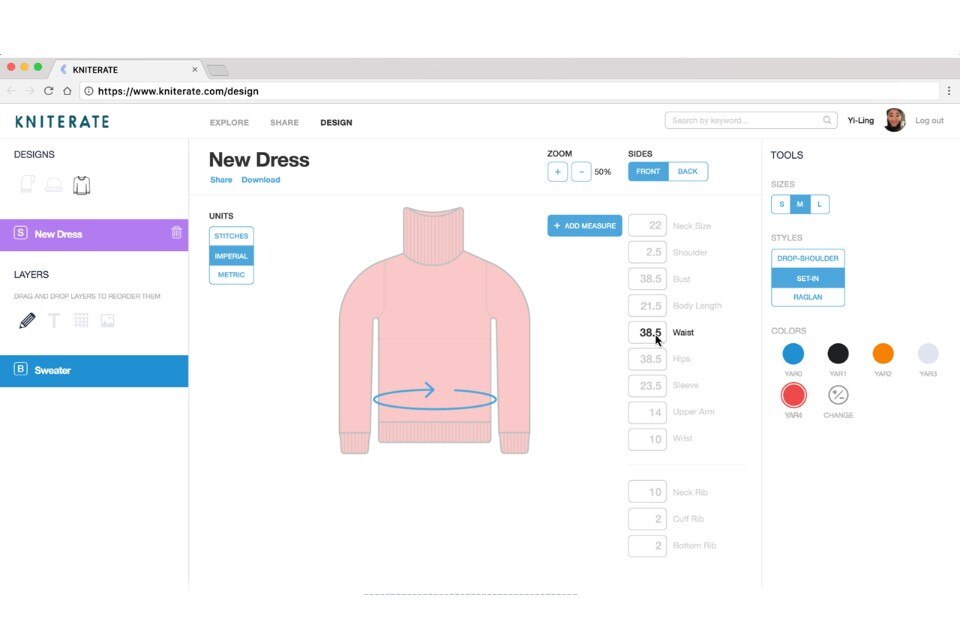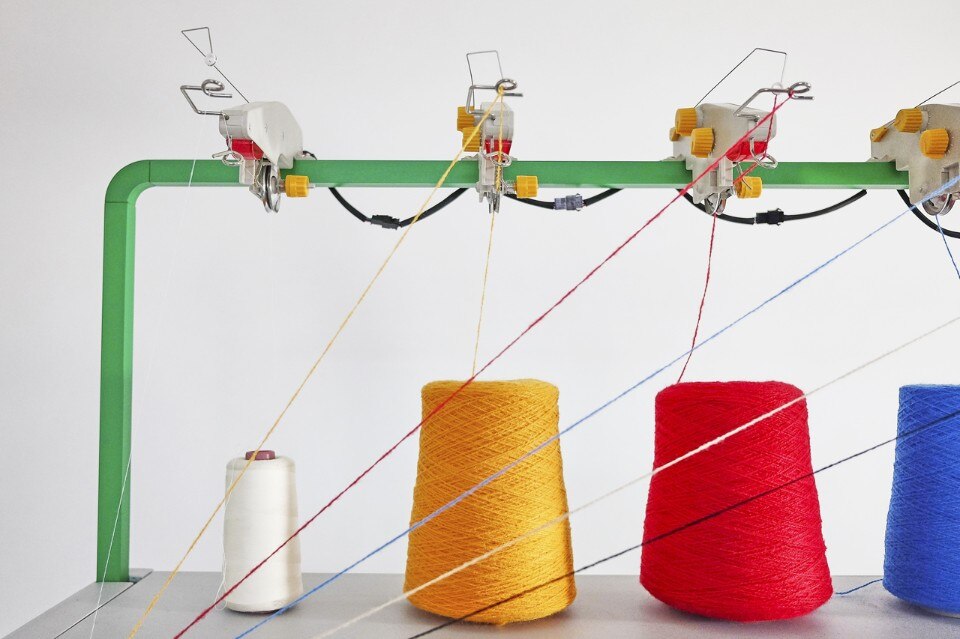
 View gallery
View gallery
It is the textile version of a 3D printer, that uses yarn to “print” digital clothing files. Via an easy-to-use internet platform, users can design garments from scratch, edit templates or upload their own images and press ‘knit’. It provides a tool that makes these kind of bespoke services more affordable for both the consumer and the maker. It is meant for workshops of independent designers, makerspaces, libraries or as part of the in-store experience of retailers.
Kniterate
Design: Gerard Rubio, Triambak Saxena, Tom Catling
Year: 2017


